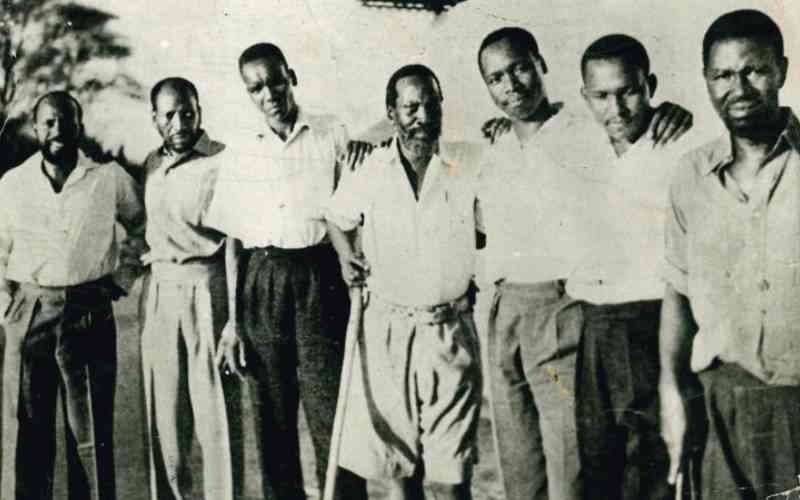×
The Standard e-Paper
Kenya's Bold Newspaper

From left: Bildad Kaggia, Kungu Karumba, Henry Cheboiwo, Jomo Kenyatta, Daniel Moi, Paul Ngei, and Fred Kubai. [File, Standard]
Hardliners and handshakes in political Kenya's political circles are a common currency. There has been instances when occupants of State House could not bring themselves to share a table with their rivals for a symbolic handshake.